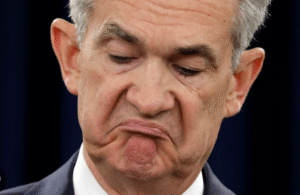$SPY $NDX #AsiaMarkets #JeromePowell #FederalReserve #OvervaluedStocks #MarketTrends #Investing #Economy #StockMarket #GlobalEconomy #FinanceNews #AsiaNews
Will Asia Markets Climb Despite US Fed’s Warning on Overvalued Stocks?
In the latest round of asia news, U.S. Federal Reserve Chair Jerome Powell expressed deep concerns about the current state of the stock market. He highlighted that the path toward potential rate cuts remains uncertain, indicating a “challenging situation” for the central bank. These remarks come at a time when many investors are reassessing their positions amid fears of overvaluation in U.S. equities.
Powell’s comments, which reflect a cautious outlook, suggest that the Federal Reserve is grappling with the delicate balance of fostering economic growth while controlling inflation. This uncertainty has led to fluctuations in U.S. markets, where major indices have shown signs of instability. Investors are now left wondering how these sentiments will ripple through global markets, particularly in Asia.
As Asian markets prepare to open, analysts are contemplating whether the potential for a rebound exists. Factors such as geopolitical tensions, shifting economic policies, and central bank actions in the region could influence market movements. Notably, Asian economies have shown resilience in the past, often reacting differently than their Western counterparts. Hence, it remains to be seen if this resilience will manifest again in light of recent U.S. developments.
Global Economic Implications of Fed’s Statements
The implications of Powell’s statements extend beyond the borders of the U.S. The interconnected nature of global finance means that heightened caution from the Fed could spark a wave of re-evaluation in Asian markets. Countries like Japan, China, and South Korea have significant exposure to U.S. economic trends, and any signs of weakness could create a ripple effect across investments.
Investors should also consider that the Fed’s hesitance to cut rates could mean prolonged higher borrowing costs, which may dampen corporate earnings projections and consumer spending. Such factors could send tremors through market confidence, affecting stocks not only in the U.S. but across Asia as well.
Potential for Growth Amid Uncertainty
Despite these challenges, there are potential growth opportunities in Asia. Emerging markets within the region may present attractive valuations compared to their U.S. counterparts. For instance, sectors such as technology, healthcare, and renewable energy are gaining traction, indicating that savvy investors could find value despite broader market concerns.
Furthermore, with central banks in Asia sometimes taking a more aggressive stance to stimulate growth, investors may find it worthwhile to explore these markets. The divergence in monetary policy between the U.S. and Asia could offer unique investment opportunities, especially for those looking to diversify their portfolios.
Conclusion: Navigating a Complex Landscape
In conclusion, while the U.S. Federal Reserve’s warnings about overvalued stocks paint a cautious picture, Asia’s markets may still find paths to growth. The interplay between U.S. economic signals and Asia’s resilience will be crucial in determining market trajectories. Investors are encouraged to monitor these developments closely and consider engaging with the evolving landscape. For those interested in further insights on market trends, consider visiting our stock analysis section for more information.
As the financial world watches closely, the coming days will reveal whether Asia can withstand the pressures originating from U.S. market dynamics or if it will mirror the caution expressed by Powell.











Comments are closed.